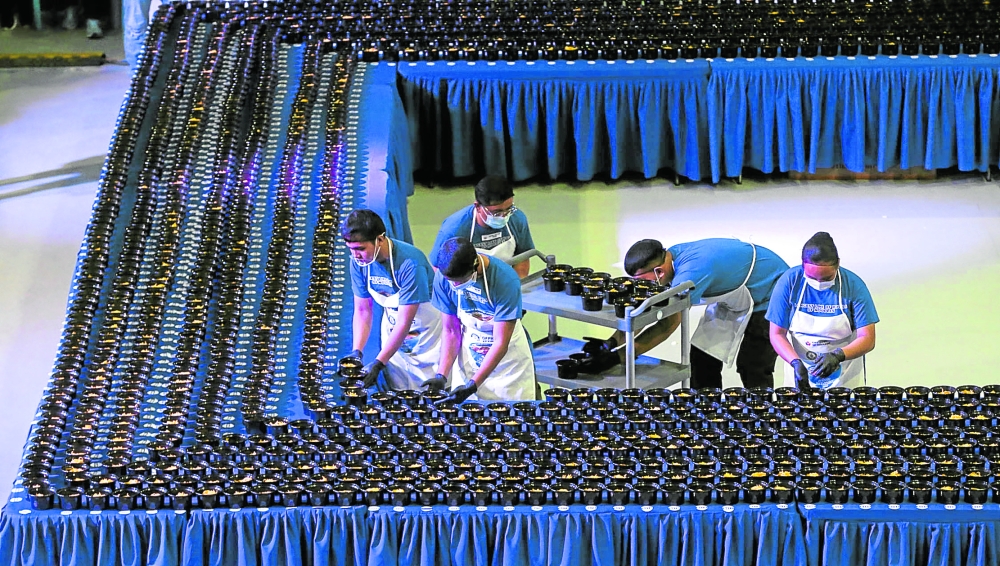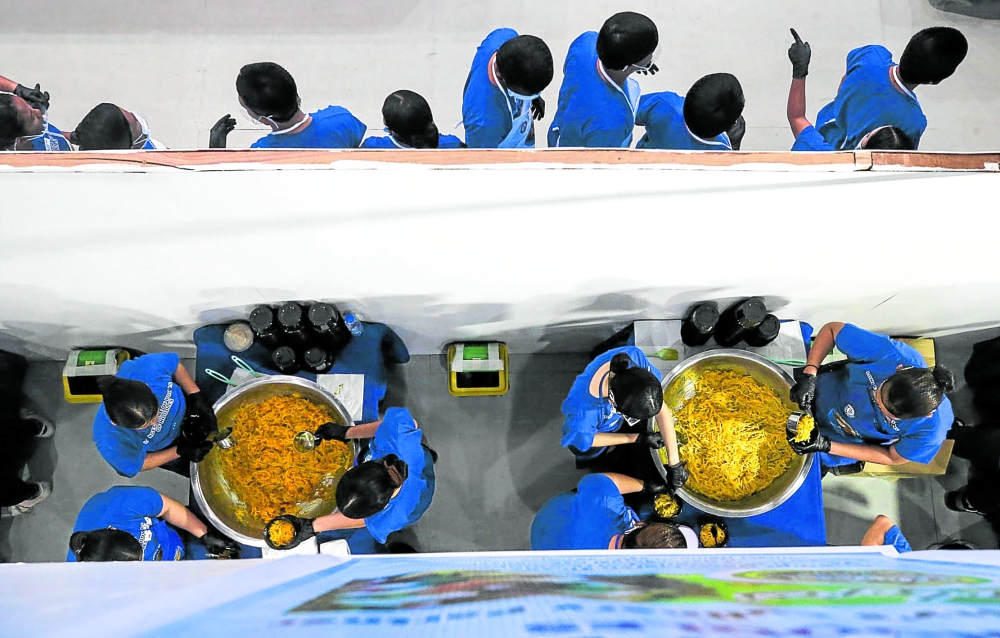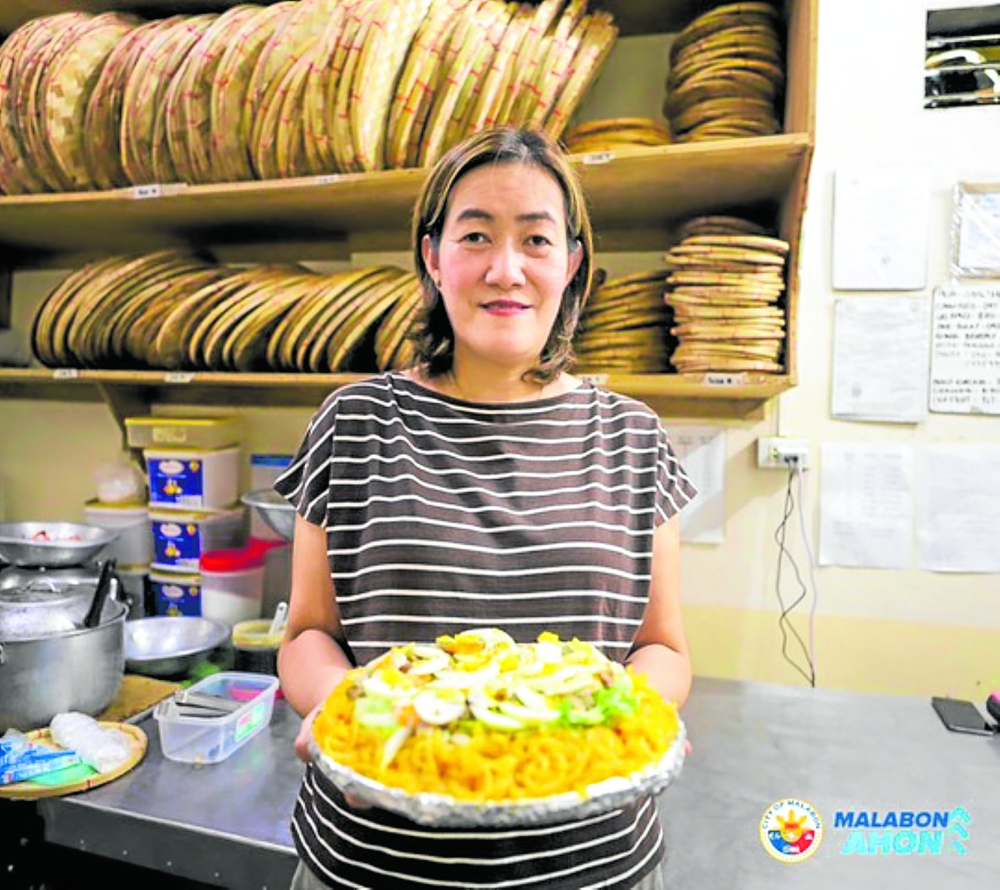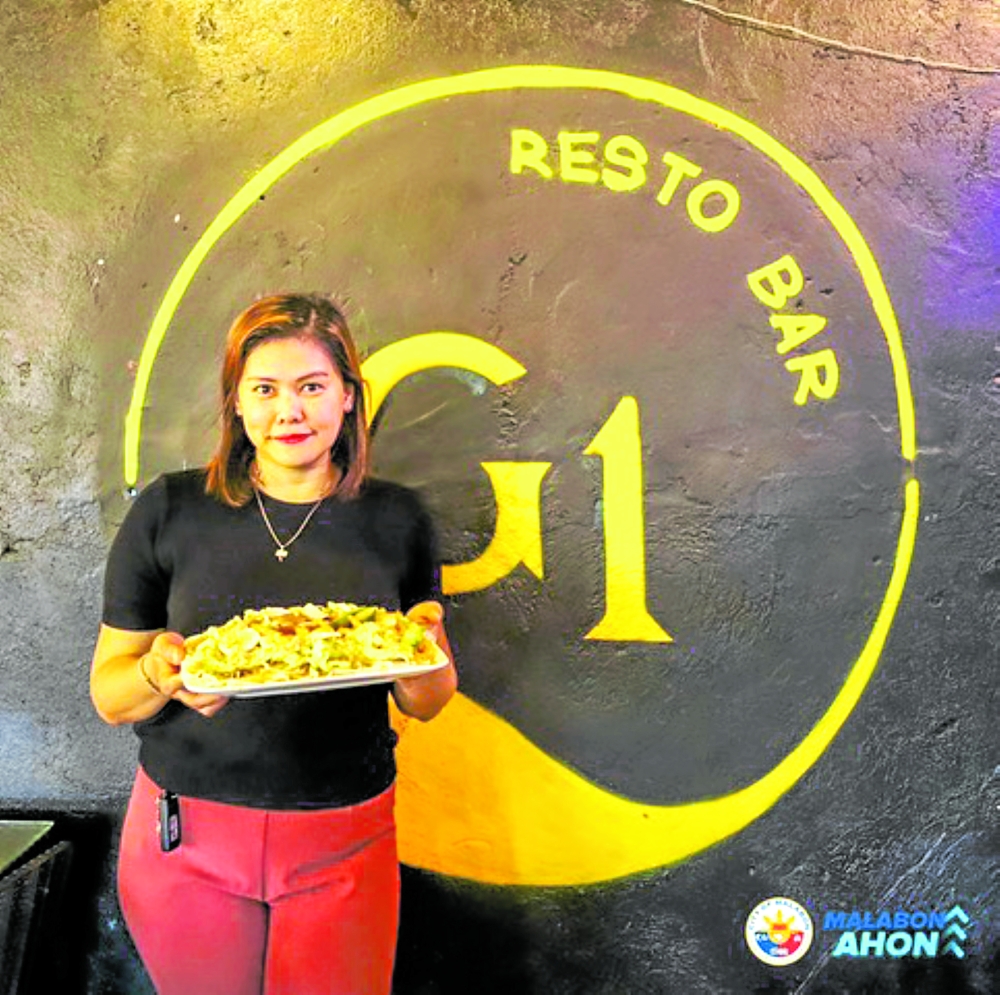Malabon ‘panciterias’ set aside rivalry to achieve new Guinness record

Malabon City is rightfully proud of its fishing roots and heritage sites, but just as iconic is the pancit that bears the city’s name.
It took center stage as the city attempted to break the Guinness World Record for the longest line of bowls of noodles last March 23, by cooking and lining up 6,549 bowls of Pancit Malabon. The attempt was successful, surpassing the previous record in China by 2,561 bowls.
In the aftermath, Malabon is touting the world record as one of the reasons for its claim of being a “city of flavors and heritage,” says Catherine Larracas, officer in charge of the city’s tourism and cultural affairs office.
“We see this as an opportunity to showcase our rich culinary heritage and promote our iconic dish. Aside from that, it’s a manifestation of our collective quest to boost our local traditions,” Larracas tells Sunday Biz in an interview.
Larracas says the record does more aside from helping Malabon share its story with the world.
“We also want to inspire our next generation. We want to promote tourism. We know that tourism is an engine of growth as far as the economy is concerned,” she explains.
She describes the dish, a favorite in office potlucks and any excuse for Filipinos to have a party, as a “cornerstone” of Malabon’s identity.

That’s it, pancit!
Larracas says that it has been around since the 19th century, when instead of rice noodles, it was still made with bamboo shoots or labong.
The word labong is where Malabon’s first name, Tambobong, is said to have derived from.
While many versions have sprung up across the Philippines, Pancit Malabon is known for thick noodles and its signature yellow-orange sauce, which varies in quantity from family to family.
Over the years, you could also buy Pancit Malabon from mom-and-pop panciterias to franchised branches of some popular brands all across the country.
“It generates more employment for us locally, of course, if you have an iconic dish that attracts tourists, especially those who love to eat,” Larracas says.
But part of the magic of Pancit Malabon is that it is intricately tied to where it traces its roots from. “Who else would contest? When you talk about Pancit Malabon, where else does that come from? There’s no other place but only from Malabon,” she quips.
The history of Pancit Malabon—Larracas narrates that it was also said that revolutionaries in the Spanish era feasted on it—is part of what made the record attempt successful, the tourism officer adds.

Winning formula
“When you have an heirloom recipe that has been there since the 19th century, and you add the culinary expertise plus community spirit, that’s the formula for a Guinness World Record.”
The task of actually figuring out how to snag the record for the Philippines fell on the hands of Roderick Tongol, the overall chair for the activity.
For their attempt of a lifetime, Tongol did not look far for help. His team enlisted 12 panciterias and businesses in the city to come up with a common recipe for the attempt and help in the preparation of each of the bowls.
Tongol tells the Inquirer that, after initial hesitation to the idea, these competing businesses were able to come around with the goal of the record-breaking attempt.
“When we were able to explain it to them after a series of meetings, that’s when they were able to understand that this is not only for the city, but it is also for them, to promote Pancit Malabon to the world,” Tongol explains.
‘Bayanihan’
According to the city officials, an army of 700 Malabuenos helped in the whole attempt, some from the private sector, the academe and government agencies, with the rest coming from the 12 panciterias.
The spirit of bayanihan helped in corralling such a large team, Tongol says. Each of the 12 panciterias had stations where they meticulously prepared the agreed-upon recipe. Volunteers portioned, weighed and lined up the bowls under the watchful eyes of Guinness representatives.
The 12 businesses varied from longtime favorites to newly opened brands trying to stake their claim in the competitive Pancit Malabon business.

One of those who helped in the event was Beverly Labayen, owner of home-based Bebette’s Pansit Malabon, who describes joining as a once-in-a-lifetime experience.
“On our part … we are still new to the business, and to be part of this history, it’s a privilege for us,” says Labayen, who opened Bebette’s in 2017. “At the same time, we wanted to help. So as someone who’s already adept at preparing pancit, we contributed to the event.”
Emma dela Cruz Limbengco has been operating Emma’s for the past 28 years, yet she still did not hesitate to agree when asked to take part in the occasion.

“Kumbaga, makikilala ka doon. (They know that you cook good food); [it means that] they trust you,” Limbengco tells the Inquirer.
Virginia dela Cruz runs G1 Restobar, one of the new kids on the block, which mostly serves Pancit Malabon for those who may want to accompany it with a drink.
“Of course, we joined because we are proud Malabuenos. We were born in Malabon, and this dish is the pride of Malabon,” Dela Cruz explains.

Standing out
Each one explained the differences of their recipes, which all felt were important in helping them standout from a crowded field.
For instance, Labayen says that their sauce was formulated to help lengthen shelf life, a boon to a dish known to go bad as soon as the sun sets. “We enhanced our sauce because this is where the life span relies on. Our customers could prove that our pancit stays good longer.”
Meanwhile, G1 Restobar’s Dela Cruz says that their version is saucier and is priced at P145 a plate, already good for two to three people.
“People ask us if we still profit from this because it’s so cheap and has a lot per serving,” she narrates.
They also share that the economy, most importantly inflation, affects their businesses the most. “We are dependent on the economy. If the people had no money to buy, we would also have no customers,” Labayen says.
But her business is sustainable as, aside from their suki or repeat customers, they also have other dishes to offer. “Of course, the competition is tough. Here in Malabon, there are many people who are trying to sell, and we also don’t have a physical store, so of course, we focus more on our marketing and the variety of products we offer.”
Limbengco, meanwhile, had no choice but to raise their prices—but not by a lot. “Life is hard nowadays, and the prices of goods are expensive. So I had to raise prices because it was not worth it for me anymore to maintain the prices as they were,” she explains.
The price of a bilao may have increased by P50, but she says that customers still patronize Emma’s. “There are always orders; I never go down to zero.”
As the city is beginning to reap the benefits of the world record, the businesses that participated have felt the “halo effect” tangibly by finding new customers.
“More people have been ordering pancit from us since we joined. [It] helped a lot,” Dela Cruz of G1 Restobar says. “Because while there are already well-known pancit makers, [now] people know that we have it too, and it turns out that our pancit is delicious too.”
For others, what will continue after the Guinness record setting is just the sheer fun of cooking for others. Limbengco, whose Pancit Malabon business helped two of her four kids through college, is now 67 years old but has no plans to stop as long as she can cook.
“Nowadays, [what I earn] goes to our spending money and household and business expenses,” she says. “Yes, I’m happy, and you get to enjoy life and not feel sad. Time goes by so fast and the hours pass quickly.”





















